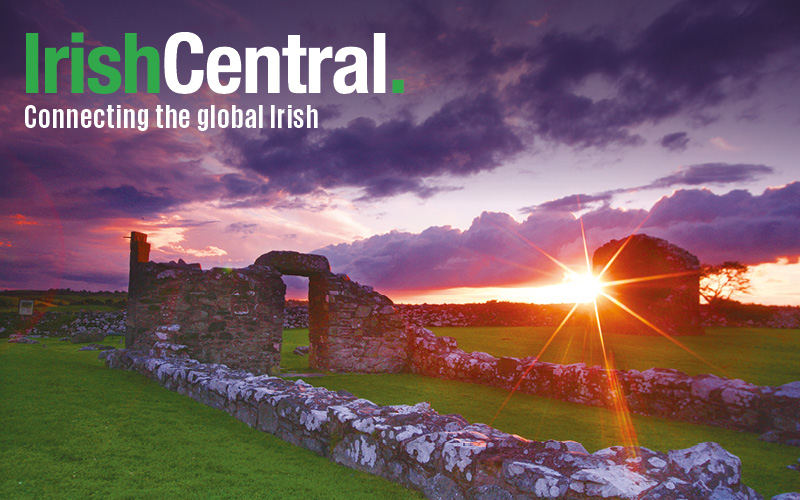My friend Vickie’s face blossoms with one of those secret smiles when I tell her she’s a cheesy broad. Truth of the matter is, she’s a cheese guru who, given the slightest opportunity, will launch into a lengthy monologue on the subtle differences between cow, goat and sheep cheeses, the chemistry involved in making cheese, and the why and wherefore of which cheese is best at what time of year. Little does Vickie know that I stumbled upon the mystery and magic of cheese when I was but a small girl.
One night in the 1950’s, my parents went to a party and I slept over at my Aunt Matilda’s house. Fully aware that we were breaking Mom’s bedtime rules, Aunt Tilda and I stayed up to watch her favorite late night TV program – The Jack Parr Show. That in itself was memorable, but equally so was the Italian cheese we nibbled all evening. I remember marveling that it was delicious despite the fact that it ‘smelled like the circus menagerie!’
Back then American cheese was boring. Unless you sought out a wedge of aged Parmesan or a wax-covered Provolone ball in an Italian deli, the most exotic cheese you could easily come by was a brown ceramic crock of processed cheddar mixed with port wine. Fast forward a few decades and the cheese world began to spin in a dizzying back-to-the-future revolution. And it was Ireland that led the charge!
At the center of the commotion was a County Cork woman named Veronica Steele. Fed up with factory cheese that she referred to as ‘spotless, sterile, pre-packed portions sweating in plastic,’ the Steeles bought a farm and a one-horned cow named Brisket, and Veronica started experimenting. The result was Ireland’s famous Milleens, a handmade artisan cheese with a mottled peach washed rind, an interior soft paste that goes from semi-firm to spilling cream, and a flavor mix of delicate herbs with a spicy tang. “When Veronica first made this cheese in 1976, it is sure she did not realize that it would be known as the cheese where the story of modern Irish farmhouse cheese making begins.” (Bord Bia)
The real history of Irish cheese making reaches back many centuries earlier. In ancient Ireland, wealth was measured in livestock, especially cattle, and dairy products known as ‘white meat’ played a key role in everyone’s diet. The 7th- and 8th-century Brehon Laws note that in summer and autumn, when the animals produced copious milk for their offspring, the population’s main diet consisted of butter, milk and cheese curds. The 9th-century Life of Saint Patrick states that tithes and taxes were often paid with curds, and the 11th-century tale Aislinge meic Conglinne relates how the Ardagh scholar MacConglinne ‘greedy and hungry for white-meats’ set out to visit the court of the Munster king where he hoped to find adventure plus a wondrous cornucopia of good things to eat.
While cow’s milk was the most common source of ‘white meat,’ the milk of goats and sheep is also mentioned in early records. Goat’s milk, now known to be more easily digested than cow’s milk due to its low lactose content, was rightly, though serendipitously, believed to be the best food for children and invalids. Sheep’s milk was considered a luxury, possibly because sheep produce much less milk than cows.
From these three milks the Irish made many cheeses: tanach, a hard-pressed skim milk cheese; that, a soft cheese made from warm sour milk curds; gruth, a curdy buttermilk cheese; mulchan, a soft buttermilk cheese that was pressed and molded; and milsean, sweet milk curds that were eaten at the end of a banquet or festival feast. A semi-soft cream cheese made from thick sweet cream with a bit of salt and dry mustard was also popular.
Cheese is even mentioned in accounts of Saint Patrick and Saint Brigid, Ireland’s patrons. Patrick is said to have had a cheese maker in his retinue on his missionary travels. Legend tells that Brigid once made enough cheese to feed all the people of Leinster with just a few cups of milk. For that reason she is the patroness of dairy workers.
Just as Ireland’s farmhouse cheese making experienced a renaissance in the 1970’s, so did America’s ten years later with the founding of the American Cheese Society in 1983. Not surprisingly, three Irish-American women were pioneers of the movement.
In 1993, Peggy Smith and Sue Conley, both veterans of California’s whole food revolution, launched Tomales Bay Foods to promote the products of local dairy farms.
Access to the best organic milk in the region and meeting up with master cheese maker Maureen Cunnie led naturally to their next venture: cheese making under the label Cowgirl Creamery, a title that reflects the indefatigable spirit of women in America’s ‘wild west.’ A converted hay barn soon housed the cheese-making facility, plus a market offering artisan cheeses from all parts of the United States, a boutique featuring natural fabric clothing, an organic produce stand, and a deli serving delicious, wholesome foods.
In the intervening years, Cowgirl Creamery cheeses have consistently won devoted fans and highest honors at local and national events. Sue and Peggy’s signature Mt. Tam is a smooth, triple-cream cheese with a buttery earthy flavor reminiscent of white mushrooms. Hearty triple-cream Red Hawk, which is washed with a brine solution that tints the rind a sunset red-orange, won Best-In-Show at the American Cheese Society’s Annual Conference in 2003. And each March Sue and Peggy commemorate the arrival of spring and honor their Irish roots with St. Pat, a round of soft, mellow organic milk cheese wrapped in nettle leaves which give the cheese its distinctive pale green rind.
While Cowgirl Creamery’s cheese is remarkable, Peggy and Sue themselves will tell you that they are but the tip of the iceberg when it comes to the panoply of exquisite American farmhouse cheeses that are described in detail on their website: www.cowgirlcreamery.com.
Cheese lovers take note! Artisan small dairy cheeses are a far cry from the pathetic pale plastic-wrapped factory-food products you find in massive supermarkets. Your nose will recognize instantly, as did mine some 50 years ago, that these are cheeses of a different order. Your mouth, however, will assure you that some miracle has transformed plain milk into something touched by the divine! And a fine way to celebrate the Feasts of Saints Patrick and Brigid! Sláinte!
Recipes:
NOTE: My cheese guru pal Vickie practically swooned when
I asked for farmhouse cheese recipe ideas. “Using these
sublime cheeses as a recipe ingredient,” she countered, “would be like flavoring beef stew with a $100 bottle of wine!”
Rather, Vickie advises that a selection of cheeses and assorted accompaniments could, and more importantly should, be the ‘star’ of the occasion.
Vickie McCorkendale’s
Cheese Course
To create a meal centered around your selected artisan farmhouse cheese, consider these options: crusty bread or crackers; nuts – roasted or candied; dried fruit – persimmons or apricots; fresh fruit – crunchy heirloom apples, pears and plump berries; smoked or aged meats; a range of jams, chutneys, honeys, and sweet pickles.
Offer at least four contrasting cheeses:
1) An aged Parmesan-style sharp, pungent cheese that pairs well with honey, especially truffled honey.
2) A creamy triple-cream Brie-style cheese is superb
with the contrasting texture of nuts and the sweetness of berries or jam.
3) The heady cave-aged flavor of a good Blue cheese pairs classically with celery, fennel, walnuts and apples.
4) The basic pungency and purity of a young Goat cheese is delicious with chutneys that offer contrasting sweetness and textures.




Comments